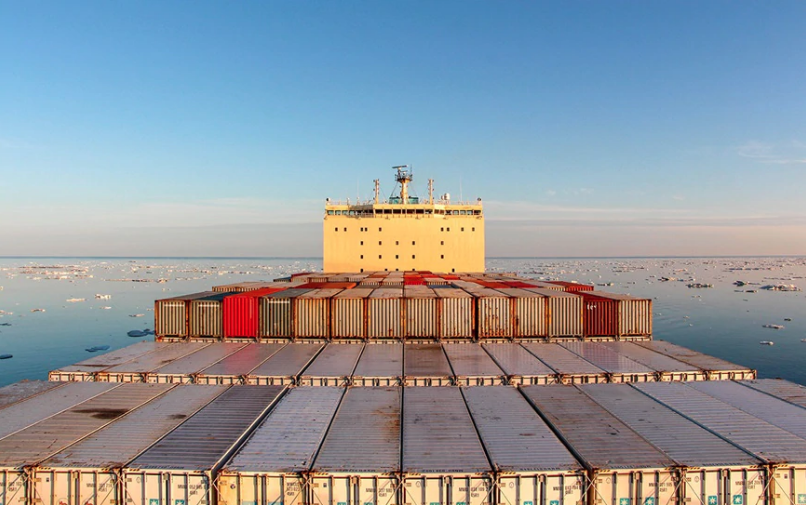A newly built Maersk Line containership completed a trial passage of the Northern Sea Route off Siberia and Russia, in what Maersk officials called a “one-off” to gain operational experience and test the ice-capable feeder ship.
It was the latest voyage in the high north, where climate changes make through passages more feasible and nations are eyeing new maritime and commercial opportunities. But Maersk cautioned it has no plans for new services in what is still a challenging and expensive environment, far from population centers.
The 656’x115’x36 Venta Maersk, one of a class of 3,596 TEU built to serve Russian markets via the Baltic Sea, embarked on the experimental northern Asia-to-Europe run Aug. 22 in the Russian eastern port of Vladivostok. After two port calls, including Busan, South Korea, to pick up containerized LNG for the Russian market, the ship headed north to make passage through the Bering Strait between Siberia and Alaska on Sept. 6.
The Venta Maersk made her way westward, on a route free off obstructive ice during the summer, but still required some assistance from Russian icebreakers in the East Siberian Sea, company officials said. She stopped at Bremerhaven, Germany, before proceeding to St. Petersburg, Russia, Sept. 28.
“We are very happy to welcome back crew and vessel safe and sound after this unique voyage,” said Palle Laursen, chief technical officer at Maersk, in a statement issued by the company. “The trial allowed us to gain exceptional operational experience, test vessel systems, crew capabilities and the functionality of the shore based support setup.”
“The voyage went according to plan and without specific incidents. The vessel and all systems aboard performed well in the unfamiliar environment,” according to the company. “Maersk had taken different precautionary measures to ensure that the trial was done with the highest considerations for the safety of crew, cargo, environment, and vessel.”
That included developing a close and regular dialogue with the Russian Northern Sea Route Administration and ice breaker companies, special training for the crew and carrying certified Russian ice pilots during the entire transit.
“Currently, we do not see the Northern Sea Route as a viable commercial alternative to existing east-west routes. In general, we plan new services according to trading patterns, population centers and our customers’ demand,” said Laursen.
“That said, we do follow the development of the Northern Sea Route. Today, the passage is only feasible for around three month a year which may change with time. Furthermore, we also must consider that ice-classed vessels are required to make the passage, which means an additional investment.”



.JPG.small.400x400.jpg)

